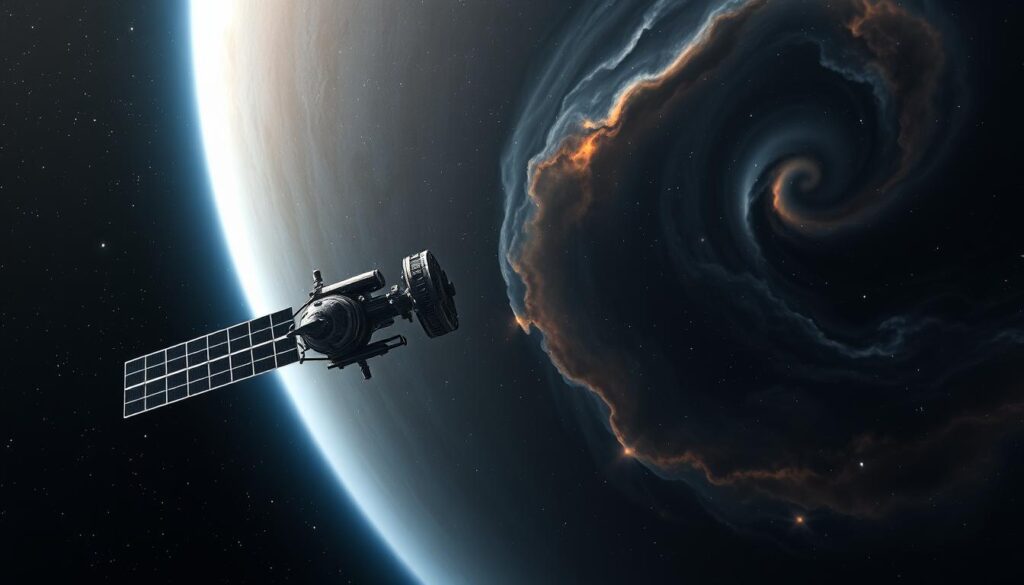Did you know that nearly 80% of the world’s flora relies on pollinators to reproduce? This staggering statistic highlights the critical role that pollinators play in our ecosystem. Pollination photography offers a unique lens through which we can appreciate these tiny creatures and understand their importance.

Nature photography, particularly pollination photography, is not just about capturing images; it’s about telling a story of nature’s intricate dance. By photographing pollinators, we gain insight into their behavior, their habitats, and the challenges they face.
Key Takeaways
- Pollinators are crucial for the reproduction of most of the world’s flora.
- Pollination photography helps in understanding and appreciating pollinators.
- Nature photography can be a powerful tool for conservation.
- Capturing pollinators requires patience, skill, and the right equipment.
- Understanding pollinator behavior is key to successful photography.
Essential Equipment and Preparation for Pollinator Photography
The art of pollinator photography hinges on having the essential equipment and preparation to capture these tiny creatures in action. To successfully photograph pollinators, one must understand the necessary gear and techniques.
Camera Gear for Macro Pollinator Shots
Capturing the intricate details of pollinators requires macro photography capabilities. A good macro lens is indispensable for this type of photography.
Lens Selection and Accessories
When it comes to lens selection, a macro lens with a focal length of 90mm or 100mm is often recommended for pollinator photography. These lenses provide a good working distance and high magnification.
- Extension tubes can be used to increase magnification.
- Close-up filters are another option for enhancing macro capabilities.
- A lens hood can help reduce glare and improve image quality.
Tripods vs. Handheld Techniques
The choice between using a tripod or handheld techniques depends on the shooting situation. A tripod provides stability, which is crucial for macro photography, while handheld shooting offers more flexibility.

Optimal Camera Settings for Moving Insects
Pollinators are often in motion, making it essential to use the right camera settings to freeze their movement.
Shutter Speed and Aperture Considerations
A fast shutter speed is necessary to capture the rapid movements of pollinators. An aperture of f/8 to f/13 is typically used to ensure a sufficient depth of field.
Working with Natural Light and Flash
Natural light is ideal, but supplementing with flash can help illuminate the subject and freeze motion. It’s essential to balance the flash with natural light to avoid harsh shadows.
Scouting Locations and Timing Your Shoot
Understanding the behavior of pollinators and knowing where to find them is crucial. Scouting locations ahead of time and timing your shoot according to the pollinators’ activity peaks can significantly improve your chances of capturing great shots.
- Identify areas with an abundance of flowers.
- Observe the pollinators’ activity patterns.
- Plan your shoot during the peak activity times.
Watching Their Dust: Photographing Players in Pollination Techniques
Capturing the intricate dance of pollinators requires a blend of technical skill and artistic vision. As we delve into the techniques involved in photographing these vital creatures, it’s essential to understand that documenting pollination behavior is not just about taking pictures; it’s about telling a story of nature’s intricate processes.
Approaching Different Pollinators: Bees, Butterflies, and Moths
Different pollinators exhibit unique behaviors and habitats, making it crucial to approach each with a tailored strategy. For instance, bees are often found in gardens and meadows, where they are attracted to a variety of flowers. Bee photography requires patience, as these insects can be quite busy. Butterflies, on the other hand, are typically found in open areas with an abundance of nectar-rich flowers. When photographing butterflies, it’s essential to be gentle in your approach to avoid startling them. Moths, which are often nocturnal, present a different challenge altogether, requiring photographers to adapt to low-light conditions.
Capturing the Decisive Moment: Pollen Transfer in Action
The moment of pollen transfer is a fleeting one, making it a challenging yet rewarding subject to capture. To succeed in pollination photography, one must anticipate the interaction between the pollinator and the flower. This involves understanding the behavior of the pollinator and being prepared to snap the photo at the right moment. It’s a dance between the photographer and the subject, requiring both technical skill and a deep appreciation for the natural world.
Composition Strategies for Telling the Pollination Story
Effective composition is key to conveying the complex process of pollination. By incorporating elements such as the flower, the pollinator, and the surrounding environment, photographers can create a narrative that engages the viewer. Techniques such as using a shallow depth of field to isolate the pollinator or capturing the intricate details of the flower can add depth to the image. Floral photography often involves playing with lighting and composition to highlight the textures and colors of the flowers and their visitors.
Post-Processing Tips for Enhancing Pollinator Details
Post-processing is a critical step in enhancing the details of your pollinator photographs. Adjusting the contrast and exposure can help bring out the intricate details of both the pollinator and the flower. Additionally, noise reduction techniques can be particularly useful when dealing with images taken in low-light conditions, such as those encountered when photographing moths. By carefully editing your photos, you can ensure that the final image accurately captures the essence of the pollination process.
Conclusion
As we conclude our journey through “Watching Their Dust: Photographing Players in Pollination,” it’s clear that nature photography plays a vital role in highlighting the importance of pollinators. By mastering the techniques and equipment outlined in this guide, photographers can capture the intricate details of pollination, inspiring a greater appreciation for the natural world.
Effective nature photography requires a combination of technical skill and creative vision. As you continue to explore the world of pollinator photography, remember to experiment with different approaches and techniques to capture the beauty and significance of these vital creatures.
By sharing your photographs and the stories behind them, you can contribute to a greater understanding of the importance of pollinators and the role they play in our ecosystem, further emphasizing the value of watching their dust: photographing players in pollination.
FAQ
What is pollination photography?
Pollination photography is a genre of photography that focuses on capturing the process of pollination, including the insects and plants involved, to tell a story of nature’s intricate dance.
What equipment do I need for pollinator photography?
For pollinator photography, you’ll need a camera with macro capabilities, a suitable lens (such as a 100mm or 200mm macro lens), and potentially a tripod or other stabilizing equipment to help capture sharp images of moving insects.
How do I approach different pollinators like bees, butterflies, and moths?
Approaching different pollinators requires understanding their behavior and habitats. For example, bees are often found near flowers and can be approached slowly and calmly, while butterflies may be more skittish and require a more patient and gentle approach.
What are the best camera settings for capturing moving insects?
To capture moving insects, you’ll want to use a fast shutter speed (at least 1/1000th of a second) and a wide aperture (such as f/2.8 or f/4) to freeze their motion and create a shallow depth of field.
How can I enhance the details of my pollinator photographs during post-processing?
During post-processing, you can enhance the details of your pollinator photographs by adjusting the contrast, clarity, and exposure, as well as using noise reduction and sharpening techniques to bring out the intricate details of the insects and flowers.
What is the importance of scouting locations and timing for pollinator photography?
Scouting locations and timing your shoot is crucial for capturing the perfect moment in pollinator photography, as it allows you to anticipate and prepare for the presence of pollinators and the conditions that will result in the best photographs.
Can I use flash in pollinator photography?
Yes, flash can be used in pollinator photography to add extra light and freeze the motion of moving insects, but it should be used judiciously to avoid startling or disturbing the subjects.
What composition strategies can I use to tell the story of pollination?
To tell the story of pollination, you can use composition strategies such as capturing the interaction between pollinators and flowers, using a shallow depth of field to isolate the subject, and incorporating contextual elements like leaves or branches to provide a sense of environment.


